Every authority blogger was once a first-time visitor to somebody else’s blog. That’s even before any of them started their first blogs.
First-time blog site visitors can become customers if you listen to them and give them a good visitor experience. In fact, customers love brands that listen to their questions and provide solutions as part of their user experience.
So how do you connect with, inspire and persuade your blog site visitors to read your content and share it? What persuades them to subscribe to your email list and buy your products or services? What do they need when it comes to your website conversion rate?
You can’t negotiate on trust. Customers don’t buy from businesses — they buy from people that they trust. If you want to reduce your bounce rate then you need to work on improving customer trust.
Start by building an online community that builds trust for you and offers credentials for your brand. The Trust Pyramid illustrates how showing your blog site readers that you care about them leads them to take action.
Make “building trust” one of your primary goals this year for your blog site.
Everything matters, when building your blog site readers’ trust. And, that’s especially true for your new readers. Things you might discount or overlook, such as a site security seal, or even a privacy shield actually help them make a buying decision as it has already established a welcome trust.
In this article, you’ll learn a simple four-step process to inspire your first-time blog readers to trust you.
Step #1: Blog with purpose
Are you blogging with purpose? You may not have given this question much thought, especially when your primary concern is generating blog post ideas that will grow your readership on your site.
Blogging with a purpose helps you track your progress and make improvements accordingly. When you’re driven by passion, it’s easy to get paid for doing what you love, as Michael Hyatt says.
If you blog consistently, you’ll gain more readers for your site. Ana Hoffman discovered that once you write 21-54 blog posts, your blog traffic increases by up to 30%. So, after that site traffic increase, what comes next?
Upworthy is a very popular blog site that attracts millions of readers every month. It uses curiosity-driven headlines for the purpose of getting more social shares. As Upworthy’s readership increased, so did its income.
What do you do with this growing community? Do you have a structure or funnel for nurturing your audience and delivering a great user experience? If you build an email list of 10,000 subscribers, how will that serve your online business and work towards improving visitor trust?
In this case study from Petovera, Matt Ackerson notes that Phil successfully earned $100,000 in his first year in business. He had a definite purpose: to capture the email addresses of his visitors and monetize them thus boosting his website conversion rate.
Purpose is the reason for doing something. The reason why most people married their spouse wasn’t that they’re fond of children, but because they wanted a partner who understands and stands by them.
The same is true for blogging.
Your purpose could be:
- To become your own boss (i.e., you quit your job)
- To build a community, publish a book and sell to that community
- To promote other people’s product as an affiliate
- To build your personal brand and become a public speaker
- To attract high-paying clients
- To attract individual customers who will tell others about your work
- Or something else entirely
Note: Find the passion for blogging. Passion makes you want to excel. If you’ve already started blogging, you can become better at it by learning from other bloggers, reading books and attending seminars or workshops.
Most of all, be a passionate writer and passion will fuel your purpose.
Define your ideal blog site reader: When you’re purposeful in your daily blogging activities, it’s easy to define your ideal reader. Here are a few points that will help you identify and define your readers:
Picture an ideal reader – This is where you make some decisions about your targeted readers. For example, do you want individuals or business owners?
Your best approach for attracting each group to your blog site will differ, so give this some serious thought. You don’t need everybody on your site. You just need the right people.
What keywords are they searching for? You need to know the exact words that they’re using to search for content online. In a sense, you want to read their minds. Our words define us.
By knowing the keywords that your ideal customer is typing into Google, you’ll be way ahead of most of your competitors.
In the example above, trying to appeal to car buyers will be a waste of time, because your website conversion rate will be low. These people are looking for car rentals. Focus on the keywords that your ideal customer is searching for and you’ll hit a home run with your site.
Where do they hang out to discuss topics related to your niche? In his book The Curve, Nicholas Lovell noted that there are millions of customers in the world — and most of them will NOT pay anything for your product. But, some will pay anything.
Your role is to focus on those people who can pay you, even if that’s only a handful. Focusing on the ones who won’t or can’t is bad business. Connecting with the right audience will give your blog site the initial traffic boost and branding it needs to thrive.
So, you need to find out where those people naturally congregate online and then be there yourself.
When you discover the keywords your ideal customers use, align those keywords with the culture of the social media platform that they’re using. This way, your content will be relevant to them.
Relevance is paramount to building a successful blog site. Before you can inspire your first-time blog visitors, find out what they like (or love), know where they hang out and use your relevant and most useful content to bring them to your site.
No matter what your niche or industry may be, your ideal customer most likely hangs out on social media networks (e.g. Facebook, Twitter, LinkedIn, Pinterest, etc.), online discussion boards and other blog sites.
Do they have websites of their own or work for an agency? If you’re dealing with B2B customers, they most likely have their own web site or blog.
But, most B2C customers are employees of a corporation or are self-employed and most don’t have a blog of their own.
Here are some examples of ways that you could define your ideal customer:
- A person who is interested in learning how to acquire leads and convert visitors into buyers
- A business owner looking to increase the website conversion rate for their software product
- A beginner blogger who wants to learn how to write in-depth articles that go viral
- A business that’s looking to build a strong brand and social media influence
Note: See your ideal customers as one person, not groups of people.
When you connect and communicate with them and nurture them with the mindset that they’re one person, you’ll speak their language more naturally. Make each of them feel like you’re addressing them individually and personally, this is great for improving visitor trust.
Develop a unique selling proposition (USP): Marketers have long relied on the USP concept. A unique selling proposition (or “unique selling point”) is the feature or attribute that differentiates your product or service from other similar website operators in the marketplace.
Simply put, your USP helps you to stand out from the crowd.
For example, let’s say that you sell software for creating landing pages. There are dozens of other landing page creators that are fast, easy to use and affordable. So, what is your edge in the marketplace? Why should customers choose your site?
Perhaps your software provides heatmaps, to show users where their site visitors are clicking most. That’s your edge – your USP.
In the book Advanced Sales Strategy, Tara Jacobsen said that “if you or your company don’t have something that stands out or makes you special, you’ll fall into obscurity and fail like most marketers.”
When you craft a USP that captivates your target audience, especially your new visitors, you’ll inspire them to share your blog posts and trust you enough to buy your product/service.
An example of a great USP is that of Podcaster’s Paradise by John Lee Dumas. See the screenshot below:
Other podcasting courses and e-books out there may inspire you to start a podcast or show you how to get started, but John actually walks you through the process of making money from it. That’s his competitive advantage and that’s why people choose his site and fill in his sign-up form.
What’s the difference between a slogan and a USP? Well, Kumar Lang clarified the core difference: A slogan does not sell – it creates attention. A USP sells.
Marie Forleo also has a very strong USP
The first-time visitor to her site would be excited to know that succeeding in life has nothing to do with luck or talent, but instead with “ACTION.”
Some suggestions for developing your USP:
- Simple tips to help you create a better:
- Know the pros and cons of your product or service
- Understand the pains of your ideal customer
- See potentials in your first time blog visitors
Listen more and answer questions – Many bloggers probably believe that they talk to their customers, but more often than not, they don’t.
Building a profitable blog site takes careful planning. But, it also requires carefully listening to your blog readers. They’ll tell you what they want.
Blogging is not a one-way street. It’s an exchange between you and your readers.
It’s about making them happy and solving their problems and then they can become your credential providers. According to SalesForce, “55% of consumers would pay more for a better service experience.” Providing a high level of support is crucial if you want to retain customers and readers for your site.
The Encarta Dictionary defines “listening” as “the process of making a conscious effort to hear; paying rapt attention to what someone has to say.” This famous quote illustrates its importance:
We have two ears and one mouth so that we can listen twice as much as we speak – Epictetus
When you start listening to your blog site readers, you’ll discover ways to offer value, instead of price. You’ll no longer struggle to sell your product or service because its perceived value will exceed the price.
Simple tips to help you listen to your ideal customers:
- Add an opt-in box to your blog to capture email leads
- Follow up with your subscribers by sending messages
- Ask subscribers what their challenges are
- Use Survey Monkey to send questionnaires to your subscribers and blog readers
- Use their feedback to tailor your content to answer their questions
Brian Dean uses these tactics to nurture his email subscribers into loyal fans and readers.
When you first sign up on his site for his email newsletter, you’ll get this email:
So far, he’s sent the email to over 57,000 subscribers and received thousands of answers. He then uses the feedback to create top-notch blog posts every other day for his site. That’s the power of asking open-ended questions and listening to your readers’ answers.
Be ready to give, give and give: What valuable gift can you give to your first-time blog visitors, in order to excite and retain them and give them a great visitor experience? Give them your time. Answer their questions. Put yourself in their shoes and feel their pain.
Why are approximately 10% of all holiday gifts ultimately returned? Clearly, the gifts weren’t what the recipients deeply wanted. Is that perhaps because the givers didn’t listen?
When a gift has no real value to the recipient and isn’t given from the heart, it will be rejected and returned.
This is also true for your first-time blog site visitors. So, how can you give them a gift that they will remember?
Write high-quality blog posts that will challenge them to take action. Give away a valuable ebook, an online course, short reports or targeted and helpful advice. Most of all, understand that your first-time blog visitors are human beings, not digital game characters.
If you give away a crappy e-book to your subscribers, they may not return it, but they’re also not likely to return to your blog site. And remember, it takes more effort and money to acquire new readers than to retain current ones.
All your readers — first-time visitors and ones who’ve been with you for months — all deserve the best. There are lots of blog sites out there, but they chose to read yours. Make it count for them.
Case in point: Aweber is an email marketing company with over 120,000 paying customers worldwide. They give away several ebook guides tailored to different industries. Aweber then makes it easy for the readers of those guides to sign up for its free, 30-day trial period.
Step #2: Understand the mindset of a first-time visitor
Think back to when you first visited someone’s site. According to Amitavac, “70% of a customer’s brand perception is determined by experiences with people.”
In other words, what other people have said about you (or your blog) helps to create the impression that your first-time blog visitors form. This is why testimonials, social proof, and reviews are important elements of your landing pages.
Other elements that you can use to give a great first impression include case studies, the results of scientific tests and studies and video demos. Third-party reviews work particularly well. A Forrester and Jupiter Research study revealed that 77% of customers read reviews before buying a product online.
The most important step that you can take is to encourage a learning-friendly mindset for your first-time blog visitors. Make it clear that you don’t have all of the answers yet, but you’re willing and able to share what you do know with them. That’s the growth mindset.
Social proof is a powerful user engagement driver when it comes to improving visitors’ trust. The people behind Conversion Rate Experts attract a boatload of multinational companies to their business, mostly because they’ve proven themselves and have built up their credentials.
For example, Conversion Rate Experts generated $1 million for Moz and helped increase Voices’ conversion rate by 25%. Business owners who are looking to increase their email subscriptions, lead generation or to boost sales from their site will want to learn more.
Express Watches increased sales by 58.49% when they added a reviews widget to their product pages. When customers talk about your product, it appears real and authentic.
Adding large-sized images of your customers also works. If you can get a happy customer or blog reader to send you their photo, you could use it to build engagement and retain first-time visitors.
Also, remember this: Your first-time blog visitors have a very short attention span; often only seconds.
Put your most important elements above-the-fold. Make your social proof, testimonials, client logos, third-party review headlines, and the opt-in box clearly visible, so that your new visitors notice them first.
When you put the vital elements of a landing page above-the-fold, you’ll most likely increase your conversion rate.
Above-the-fold is the first section of your blog that people see, without scrolling down.
Chris Ducker’s new blog redesign beautifully demonstrates this concept. The most important elements for captivating new visitors are above-the-fold (e.g., opt-in box, value proposition and a personal photo for branding purposes).
How they learn new things: One survey found that visitors often leave a blog 10 to 20 seconds after landing on the page. Blogs that offer some form of education or training tend to acquire and retain more blog readers because teaching sells.
This is why educational sites that focus on teaching their users how to do a particular thing or achieve a significant result are thriving.
For example: Copyblogger:
First-time site visitors fall along an S-shaped learning curve. This curve’s initial phase is a slow beginning, followed by a steep acceleration and finishing with a plateau.
Don’t assume that your blog site visitors are professionals who are familiar with what you’re talking about. This is why you should study them, as well as to conduct a competitive audit, to pinpoint exactly what other bloggers in your industry are doing to move forward.
On your blog, start by setting up a separate page just for beginners and first-time visitors. Of course, your “About” page is equally important. But, having a “New Here?” or “Start Here” page will show them exactly where to start and how to navigate your blog pages.
Pat Flynn uses this strategy. His “Start Here” page was created with first-time users in mind.
Apart from Pat, several other authority bloggers have also set up specific pages for new users. Empire Flippers has a “Start Here” link clearly displayed on its homepage, which leads to a page that explains what website flipping is all about and how to get started.
Even corporate blogs, like Lead Pages, use video on their homepage to show new users how the software works.
Build interest by using stats and data: Your new readers will trust you more if you can back up your claims with statistics and data.
There are several research studies, surveys, and experiments that you can use as backup data. It doesn’t matter what your niche is. A simple Google search is all that you need.
Step #3: Build a blogging community
Community is everything. Social media shares of your blog posts can be improved by engaging your community.
If you want to inspire your new readers to trust you wholeheartedly, then make them a part of your tribe. Get them involved. Community makes blogging worthwhile.
You can benefit from your email subscribers, simply by asking them to contribute to your upcoming blog post, online course or book.
Danny Iny was very smart. He networked with over 20 A-list bloggers and authors, all of whom contributed to his book Engagement from Scratch. The book generated over 230 customer reviews on Amazon.
When you spend quality time building and nurturing a community, you’ll succeed in building your own tribe – people who will trust you enough to tell others about you and buy your products again and again.
Dave, the founder of Nerdfitness, has built a loyal tribe and it shows in the daily engagement that takes place at NerdFitness Rebellion.
Building a community also helped me to establish a strong brand online. In fact, in a recent blog post, I asked readers to pick an idea on how to generate $100,000 per month within six months. That post generated over 2,300 comments.
An engaged community made it possible. But, it takes a lot of time to build such a community.
You’ve got to be consistent and passionate and always listen to your readers. When they ask you a question, answer it as quickly as possible.
Here are a few tips that can help you build a blogging community:
Command attention with your headlines: Writing the perfect headline will give you an edge in the blogosphere. It doesn’t matter if your competition is fierce. Once you can nail a captivating headline, half the job of community building is done.
Bear in mind that people don’t have to read your article or blog post before they share it. Many times they won’t, especially when the headline is catchy and seems sharable. They’ll share it first, then decide whether or not to read it.
In other words, people frequently share content based on the headline alone.
A headline has only one purpose: to inspire the reader to read the next line.
Ted Nicholas, a renowned direct response copywriter rightly said that “73% of the buying decision is made at the point of the headline.” I wholeheartedly agree with that.
What type of headline should you write? Well, there’s no rule that’s set in stone, but certain styles tend to perform better than others.
Overall, headlines that appeal to the reader’s emotions are more likely to get clicked than a generic keyword that appeals solely to logic and reason.
So, how do you write headlines that attract new readers?
Find a popular headline on the topic that you want to cover and make it better.
Go to Google and type in your keyword – e.g., niche selection.
The three headlines in the above screenshot are:
- Selecting a Product and Choosing a Niche
- Finding Your Niche in 20mins or Less, with 3 Simple Steps!
- 5 Steps You Can Use to Find Your Niche
Now, let’s craft more clickable benefit-driven headlines from the ones above:
- 7 Steps to Simplify the Niche Selection Process
- Top 13 Ways to Simplify the Niche Selection Process
- Niche Selection: 25 Untapped Ways to Select the Right Niche
- 8 Profitable Niche Selection Strategies From (Expert’s Name Here)
Use professional design and clear navigation: SeeWhy’s extensive research revealed that 99% of people will not buy on their first visit.
They need to establish a level of trust with you. Your job is to make it easier for them to make the buying decision.
New blog readers don’t want clutter and distractions, such as pop-ups and disorienting animations. Yes, there is no denying the fact that pop-ups can increase your email list sign-ups, but they can also annoy users.
Your design should be clean, clear and have one purpose – to attract people and make them click your headlines, then subscribe to your list and get to know you in person.
Step #1: Rethink your design – It’s about the user, not you. Design a blog or site that gives them a community to live in and a place to be heard.
You should design your blog, not for aesthetics, but for conversions.
Step #2: Clean up your sidebar – What’s the use of all the banners on your sidebar? Only put the relevant ones there and get rid of the rest
I’ve found that you can link to your valuable posts there, to increase your search rankings.
Color psychology and effects on first-timers: People are attracted to certain colors more than others.
The psychology of colors can increase your conversion rate. It doesn’t matter what your niche is. Some colors trigger trust, while others inspire confidence. Look at the classifications below:
For your first-time blog readers, the colors that you choose for your logo, header, headlines, images, links and call-to-action buttons will either encourage or discourage engagement.
For more information, check out Gregory Ciotti’s excellent guide, The Psychology of Colors in Marketing and Branding.
Don’t forget to create content for your new readers, as well, because that’s why they came. It doesn’t matter how colorful your blog design is; if the content sucks, you’ll fail.
Step #4: How to inspire trust in first-time blog readers
The best and the most beautiful things in the world can’t be seen or touched – they must be felt with the heart – Helen Keller.
Inspiration, trust, respect, professionalism – these things can’t be seen or touched, but we recognize them when we see or feel them.
Inspiration needs to be activated in your readers. You can inspire them to trust you. The responsibility is yours.
Eben Pagan taught me how to inspire others to take action. He uses the same formula to create, launch and sell millions of dollars in information products.
The strategy is known as MIA and it stands for Motivation, Information, Action.
Motivation: Give people a reason to do something. For example, people may not want to invest in your new online course. Maybe they don’t need it at the time, or maybe they’re too busy with other obligations.
But, you can change that attitude and instill in them a perceived need for it. That’s marketing at its very best. No, you’re not deceiving or using tricks to achieve your aim. You’re just using an understanding of humans beings and how they learn.
You can motivate your new readers to stick around. All it takes is honesty combined with some hope and inspiration.
Wider Funnel’s homepage motivates me a lot. I don’t know about you, but each time I read their subtitle, I want to test and grow my leads and sales. Take a look:
During his video coaching a while ago, Eben Pagan said, “don’t ask for that sign up yet, not even the sale, until your customers are motivated.”
Information: The “I” stands for information. When users type a keyword phrase into Google search, they’re looking for information. But, we’re also living in the age of information overload.
There are billions of posts and articles online, all providing some kind of information. Over 1500+ blog posts are created every 60 seconds. It’s often unbearable.
In a competitive market, you have to stand out. Write high-quality content. Spend time researching your content and don’t be too quick to publish it. Make sure that your content is relevant to your target audience.
If possible, repurpose your content to get it to the right people – and don’t stop building relationships, because that’s what truly matters.
A quick fix: The moment you’ve motivated your new readers, by giving them a reason to stick around, don’t waste their time. Go ahead and solve their problems. Don’t ask them to do something else. Don’t let their motivation die.
An example of a blog that doesn’t keep its readers hanging is Search Engine Land. On their homepage, you find lots of information, in the form of blog posts and stats.
Call-to-action: The final piece of the MIA puzzle is a call-to-action.
Don’t keep your first-time blog visitors hanging. After you motivate them to read your blog post, go ahead and call them to action. There are 11 ways to improve your calls-to-action. Always test and find out what works for you.
Tips to make your call-to-action buttons impressive:
Be clear with your message: If you want people to sign up, don’t use jargon or try to be clever. Evernote is a perfect example of clarity:
Use the right colors: The colors that work for me might not be best for you. That’s the reason why you should test a few different colors.
However, certain colors tend to attract more clicks. This often comes down to testing various colors in search of the one that generates the best results.
Conclusion
According to Marcus Sheridan, founder of The Sales Lion, “Your blog is an essential business tool for connecting with potential customers.” Someone may visit your blog today and become your highest paying client tomorrow – all without relying on expensive advertising technology, but with the power of blogging and trust.
Everything you do as a blogger still boils down to defining your audience and looking at each day as an opportunity to put smiles on their faces. See blogging as an avenue to touch lives and make the world a much better place.
That’s what content marketing is supposed to do – to reach the right people and meet their needs in an interesting manner. Traditional marketing doesn’t do that.
Of course, you’ll eventually drive blog traffic, earn a living, build a responsive list and connect with great influencers. But, beyond that, you’ll be solving people’s problems.
How do you welcome first-time visitors to your blog? If you have a specific strategy or tips, go ahead and share them in the comments.




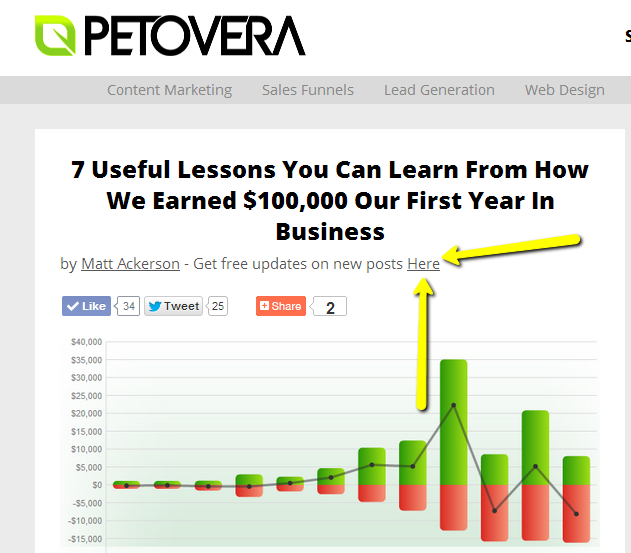



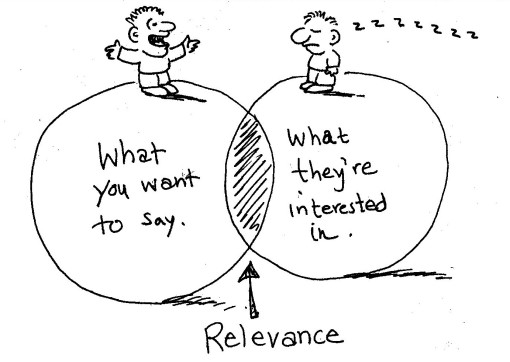




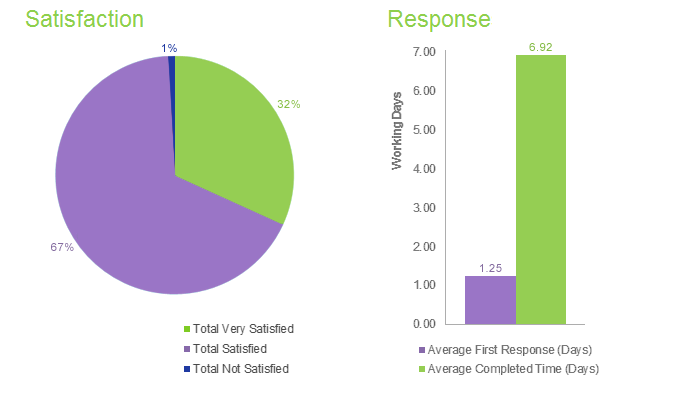
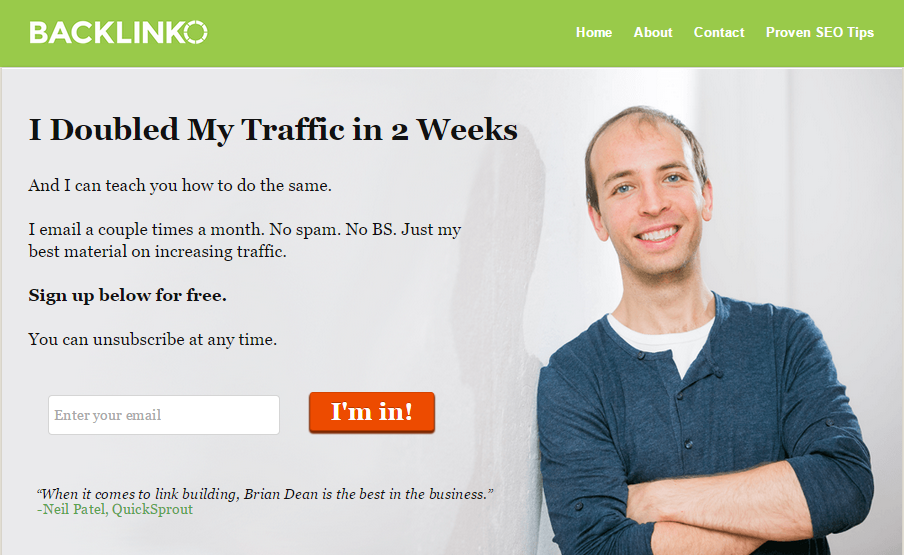
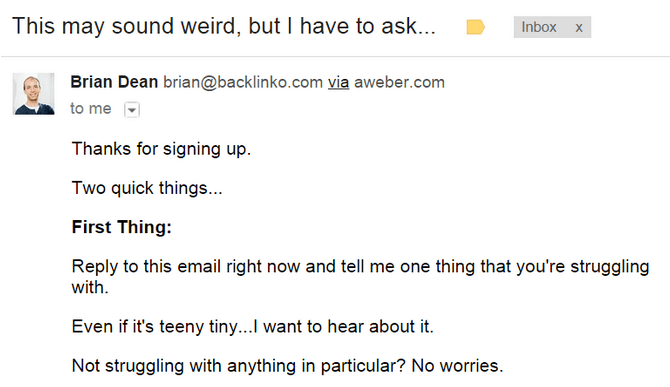

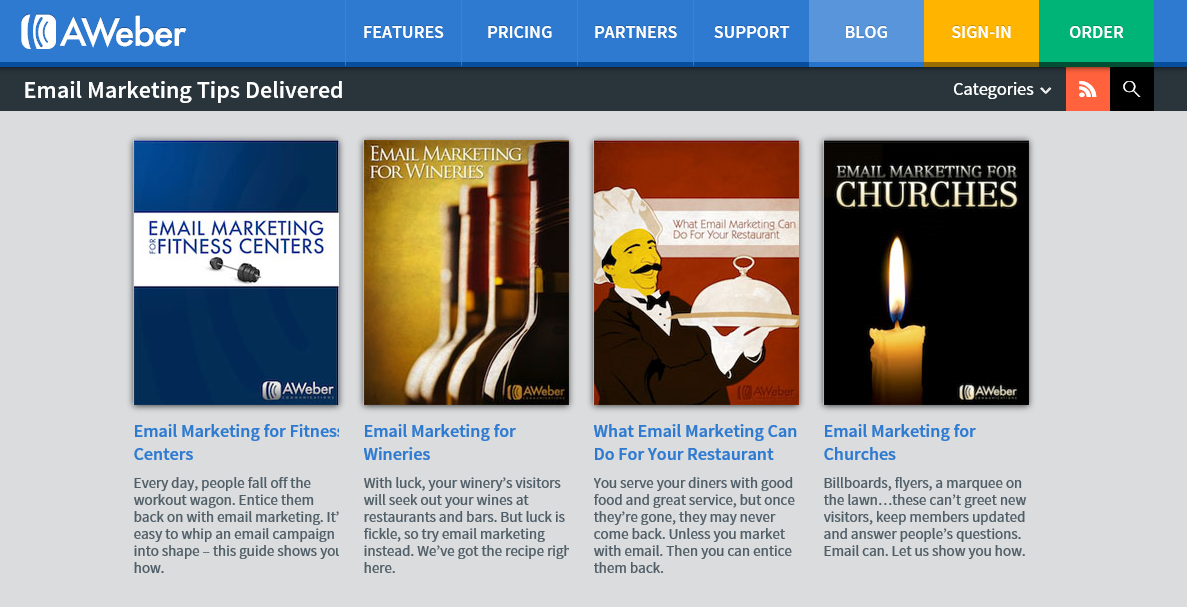




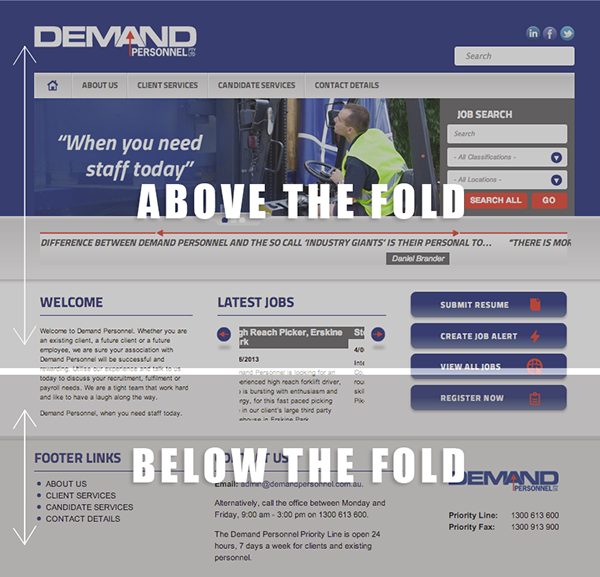







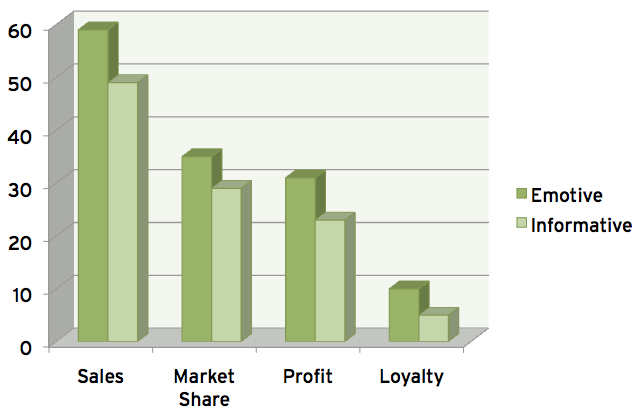

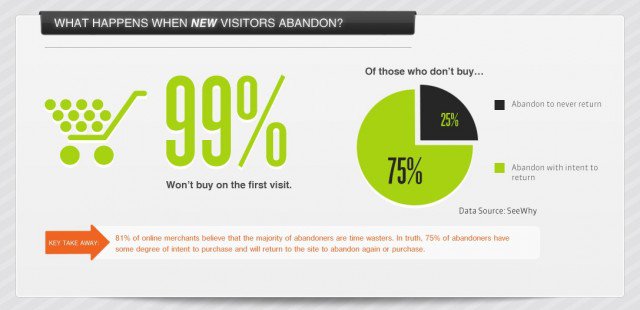





Comments (73)